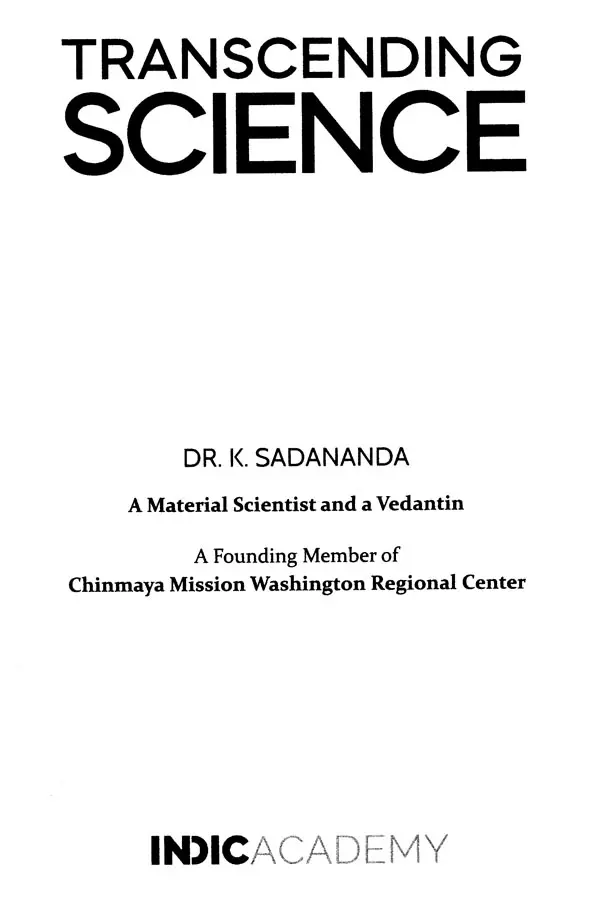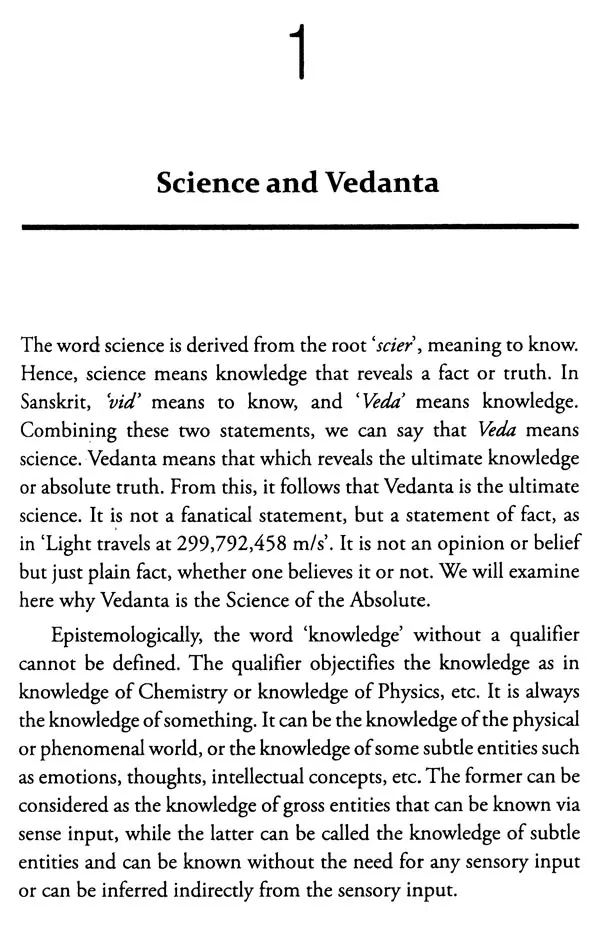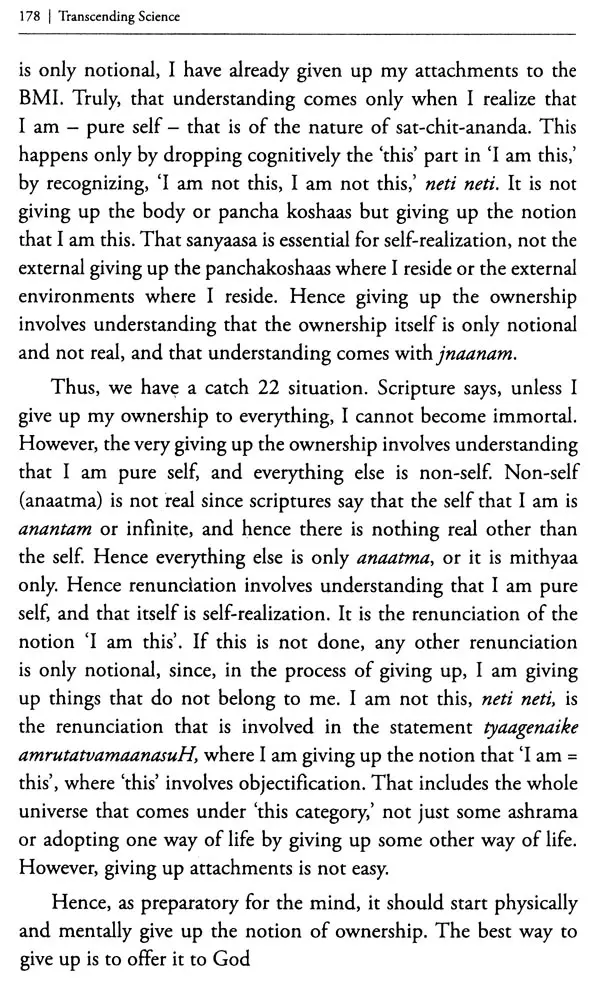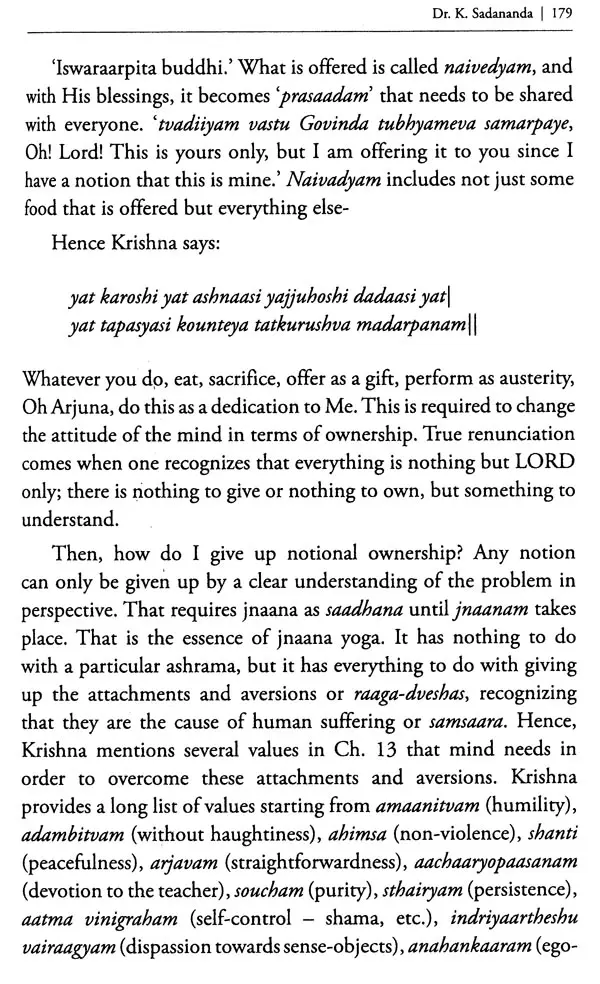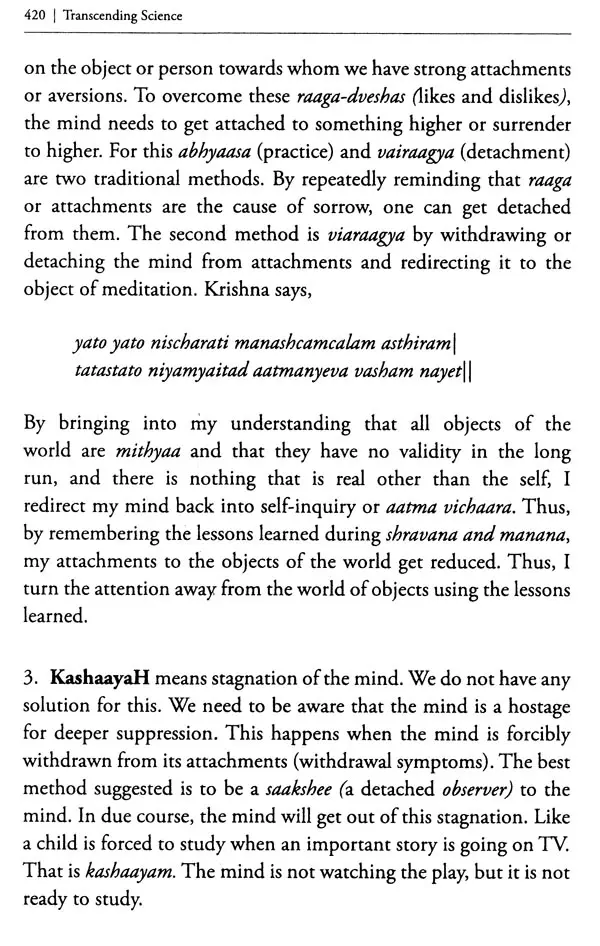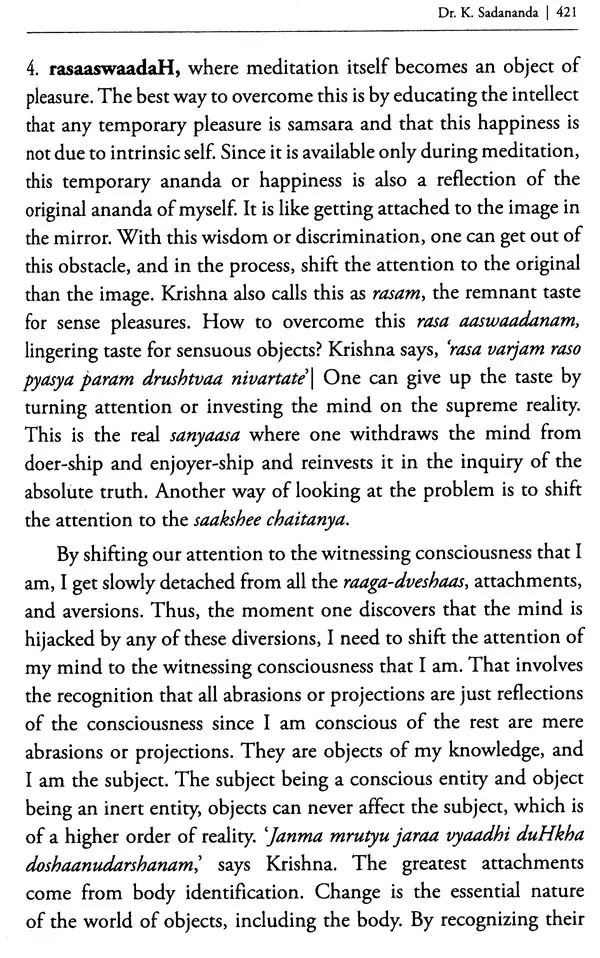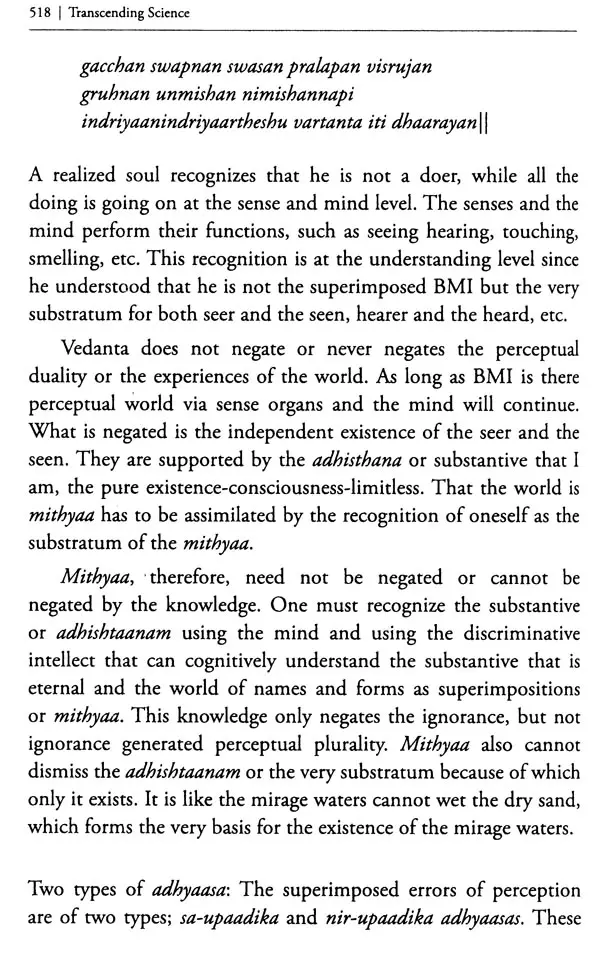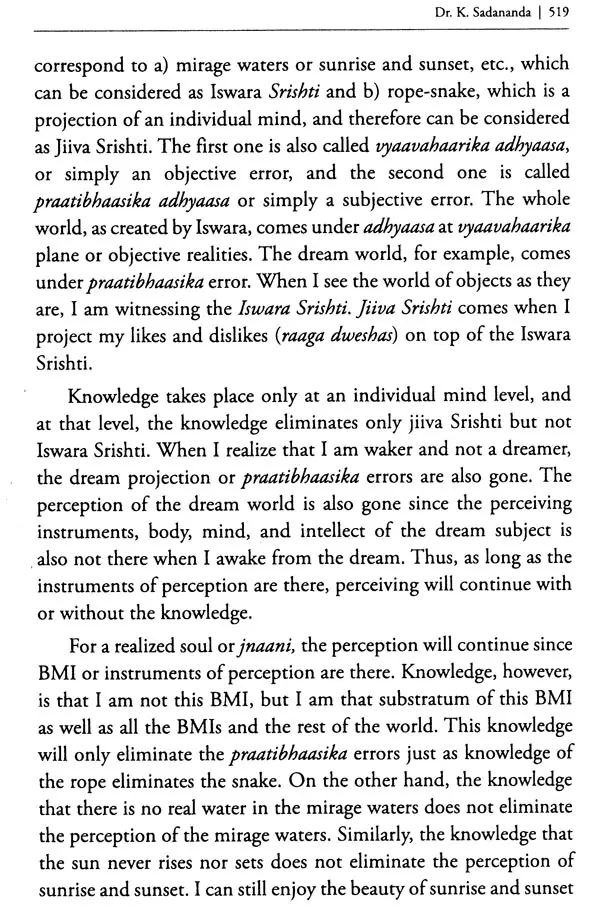
Indica Transcending Science
Book Specification
| Item Code: | UAJ400 |
| Author: | K. Sadananda |
| Publisher: | Indica Academy |
| Language: | English |
| Edition: | 2020 |
| ISBN: | 9781648288548 |
| Pages: | 526 |
| Cover: | PAPERBACK |
| Other Details | 9.00 X 6.00 inch |
| Weight | 520 gm |
Book Description
He retired in 2005 and now works as a private consultant in the United States for six months of the year. He was also a visiting professor at the Indian Institute of Technology, Madras. He is a disciple of Swami Chinmayanandaji, was a founding trustee of the Chinmaya Mission's Washington Regional Center as well as Shree Siva Vishnu Temple, Maryland, USA.
He served as Secretary and Treasurer of SEVA, Inc., a philanthropic organization formed around 1980 by Chinmaya Mission, to fund projects in India and elsewhere. Currently, he is an Acharya or spiritual teacher of Chinmaya Mission and splits his time between the USA and India. Advaita Academy has been sponsoring many of his talks on Vedanta and has made them available on 'YouTube under Acharya Sadaji. He is also the author of the books, Introduction to Vedanta, three volumes of Journey Beyond: A Non-Dual Approach, available on Amazon, USA, UK and India. He is married to Mrinalini Sadananda, who is a well-known Kuchipudi dancer and choreographer.
Dr. K. Sadananda of Chinmaya Mission has been having Vedantic discussions for more than a decade and has published three books earlier. The present publication 'Transcending Science' covers a vast number of topics which are important in the study of Vedanta. Also, it can provide greater clarity in these topics for a seeker wanting to . walk the path of inner transformation.
The hard work, consistency and systematic presentation of the subject by Dr. K. Sadananda is worthy of appreciation. May his work spread far and wide and benefit the seekers.
However, my questioning mind became more active. I used to ask many questions during science classes for clarification. Many teachers made me think deeper than just answer my questions. A professor, who taught me during my Ph.D. and met me fifteen years later in a conference, said he remembers me very well. He said that he was thankful to me since he had to prepare a lot to be able to answer all possible questions that I might ask. He felt it was a real challenge for him, and as a result, he said, he learned a lot.
My desire to learn the truth got intensified until I attended Swami Chinmayanandaji's discourses at the American University in 1998. I had to attend because of my wife's insistence. However, his very first lecture on the logic of spirituality and Karma Yoga captured my mind.
I personally met Swamiji a couple of months later, who encouraged my questioning, advised me to take the postal Vedanta course from Chinmaya Mission, and also start a study group in Washington, D.C: He also formed Seva, In a philanthropic organization under the umbrella of Chinmaya Mission and made me the secretory-treasurer. During the course of time, he answered many of my persistent questions, and before answering used to ask me to think deeper.
However, the consciousness (or knower) cannot be an object (the known). So in this sense, Vedanta departs radically from ordinary science. And if 'God' is identified with consciousness-a key claim of Vedanta-then God also cannot be an object of consciousness. Yet if our nature is indeed divine, then we have access to this reality, since it is our nature. Note that in Vedanta, God as substratum of the universe is referred to as Brahman, and God as our true inner nature as pure consciousness is referred to as Atman. A Mahavakya (or key saying) of the Upanishads (highest scriptures of Vedanta) is 'Aham Brahmasmi' or Atman and Brahman are one and the same.
How do we establish this awesome claim? Through introspection, and Sadananda's book provides a clear and detailed discussion of just how this is done. After all, as Sadananda points out, 'objective sciences cannot establish even the existence of a mind or thought,' but we all believe in these entities! (Interestingly, Vedanta thinks that mind is in fact a subtle form of matter.) Furthermore, the more we examine the so-called objective world, the less real it seems. A chair is made of fibers, which in turn are made of atoms, which are nebulous clouds of particles and energy that are still quite mysterious to physics, presenting many well- known paradoxes of quantum mechanics.
Book's Contents and Sample Pages
